Thursday, October 24th, 2019.
In this Daily: The Kayak Snorkeling Tour in the Bay at Las Catalinas
The tropical waters around Costa Rica are home to many species of aquatic life. Thanks to Costa Rica’s position on the Ring of Fire, the country formed from millennia of volcanic activity. As a result, the topography in the country is complex, which extends beyond land and out into both Pacific and Atlantic Ocean.
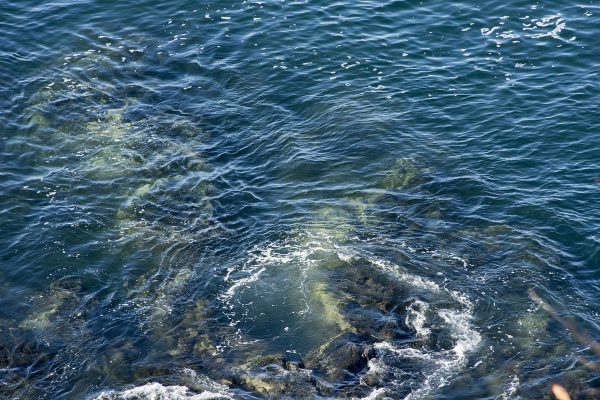 The Volcanic Rock Reefs off of Punta Penca
The Volcanic Rock Reefs off of Punta Penca
Stretches of open ocean, sheltered bays, secluded mangroves, subaquatic structures of volcanic rock, and islands like Isla del Coco, Islas Catalinas, and Islas Murciélagos create a wide variety of different habitats for fish, reptiles, sharks, rays, and mammals.
On the coast of Guanacaste, exploring some of the world’s most vibrant aquatic habitats can be as easy as stepping in the water with a mask and snorkel. From Las Catalinas it’s even easier to embrace the ocean, with access to two snorkel sites full of aquatic life on either end of Playa Danta, and two more within a short paddle.
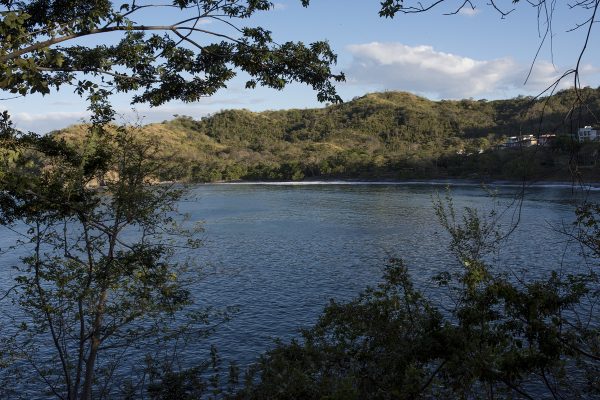 The Bay off of Playa Danta and Dantita
The Bay off of Playa Danta and Dantita
Explore them all on the Kayak and Snorkel Tour from Pura Vida Ride.
The Aquatic Life of the Cove Off of Las Catalinas
The waters of the bay around Las Catalinas are calm, welcoming, warm and clear. There is a natural protection from strong offshore waves and wind thanks to Punta Guachipelines and Punta Penca, as well as the additional shelter of the Islotes Pitahayas.
This creates an interesting situation, where there is access to open ocean to welcome larger fish and deep water currents that move by the area and provide nutrients, but a concentrated area for life. Thanks to a number of volcanic rock reefs in the area that provide a place for life to take hold and the bay has an ideal combination of factors to host life.
Fish in the area range from nearly-invisible gobies and wrasses to small fish like trevally, moderate sized fish like puffer fish and parrot fish, and even large rays, sea turtles, and dolphins.
Each snorkel site has a slightly different biological profile thanks to topography and currents moving through the area, which means that each site offers a different experience to the snorkeler.
Snorkeling Sites
There are four main snorkel sites within a short paddle from Las Catalinas. From south to north, they are:
Punta Penca
Punta Penca, on the south end of Playa Danta, is the most sheltered spot in the bay. Currents from offshore are blocked by the Islotes Pitahayas, creating a habitat dominated by more slow moving fish like pufferfish, needle fish, and spiny lobster, crabs and slower moving rays. This is also an ideal spot to encounter nudibranchs, sponges, and other colorful invertebrates.
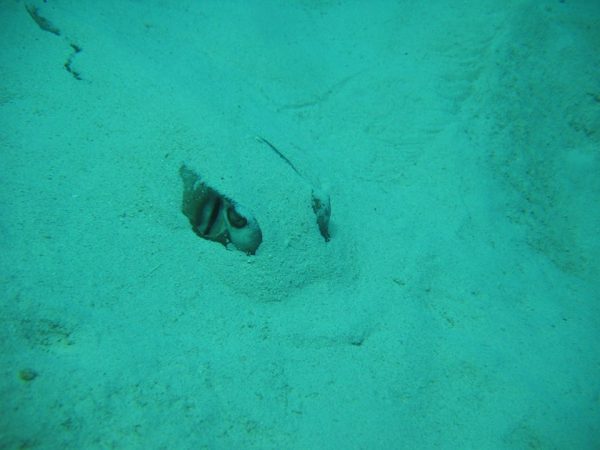 A stingray buried in the sand
A stingray buried in the sand
North of Playa Danta
The rock reef between Danta and Dantita beaches intersects with the sand flats that comprise most of the seafloor of the cove. As a result, this area provides a blend of the smaller reef fish that live among the rocks and the swift schools of larger fish moving by through the flats. An ideal spot to encounter vibrantly colored reef fish like golden trevally and sergeant majors as well as schools of jacks and the occasional eagle ray.
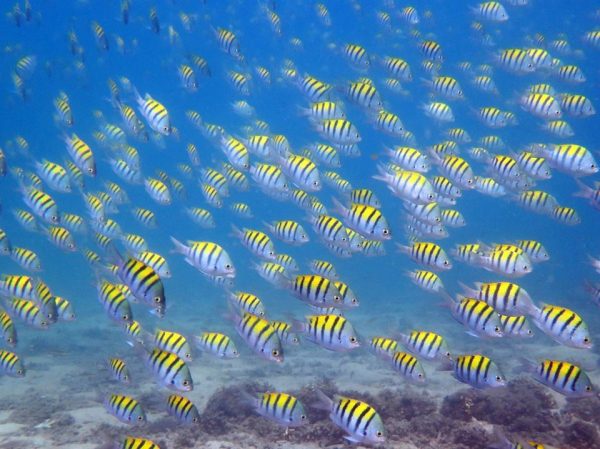 A school of sergeant majors
A school of sergeant majors
North of Playa Dantita
The north end of Dantita beach is also an intersection, but this time between shore and the open water past Punta Guachipelines. This site offers a better chance to encounter schools of large jacks and sergeant majors, parrot fish, plentiful rays, and sea turtles.
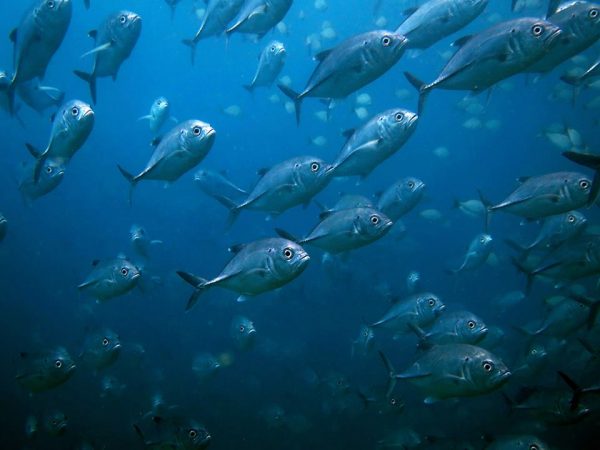 A school of common jacks
A school of common jacks
Playa de Amor (Honeymoon Beach)
A short paddle from Playa Danta around Guachipelines is the secluded beach of Playa de Amor, where the heavier offshore reefs and the tight mouth of the cove make the water startlingly clear. The long rock reef at Playa de Amor’s south end provides a transect from open water to sheltered cove, creating a mixture of all of the fish found at all three snorkel sites.
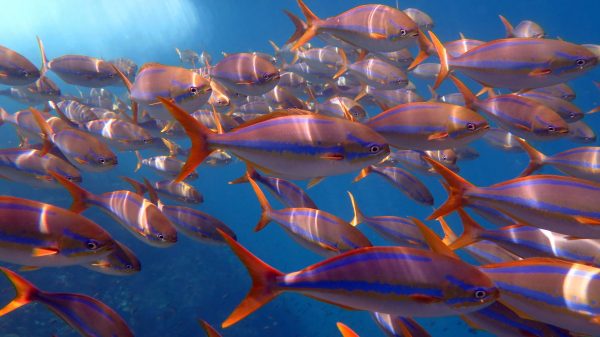 A school of rainbow chub
A school of rainbow chub
The Kayak and Snorkel Tour
After some instruction on safety and communication, these guided trips set out from the beach in front of Pura Vida Ride in kayaks, to venture across the cove to multiple different sites, drop anchor or beach the kayaks, and then snorkel along the reefs. Along the way, your guide will help find high-activity areas based on tides, wind, and currents, and then dive in with you to point out fish and other marine life.
Trips that stay within the bay average around 2 hours, while the trip to Playa de Amor takes a bit longer, around 3 hours. However, both offer a chance to see the coast of Guanacaste from the water, paddle-up access to beaches and snorkeling, and an immersion into the world full of life that can be found underwater.
[maxbutton id="1" url="https://cta-redirect.hubspot.com/cta/redirect/4917861/bcfc7719-d7c2-4266-83c0-da59899a4f59" text="Organize a Kayak Snorkeling Trip" ]